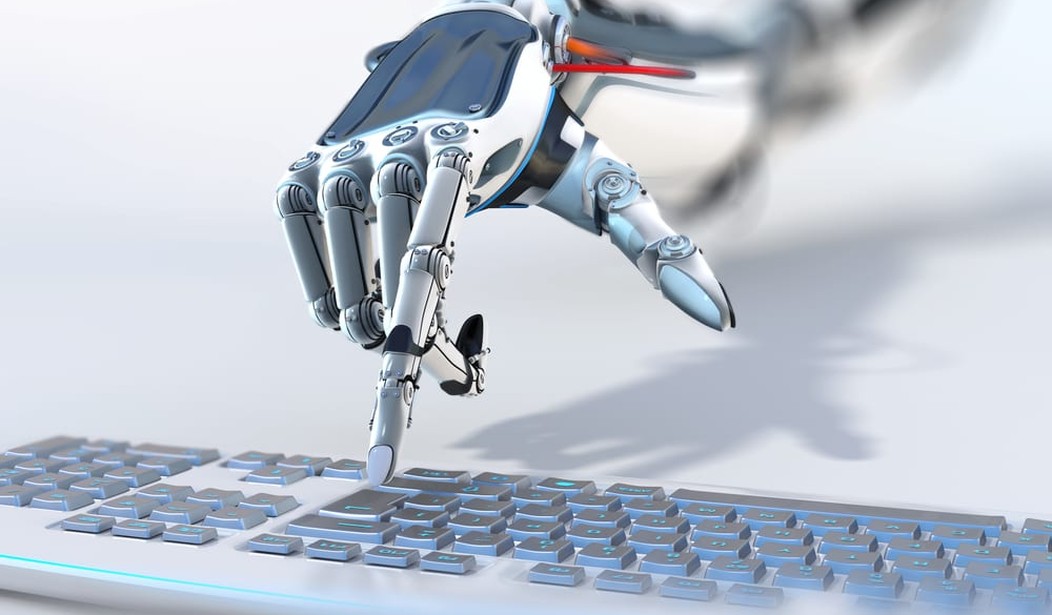Robots will be doing 45 percent of the world’s manufacturing work by 2025, up from 10 percent today, according to a Bank of America study released in November 2015.
That probably doesn’t shock many of us. We have all been told for a couple of decades that robots were going to take over assembly line work in factories.
Robots have been doing welding and spray painting in factories for years. They are big and bulky, bolted to the floor, unable to do more than the work of beasts, like yoked oxen.
“Now, more advanced robots are gaining enhanced senses, dexterity, and intelligence, thanks to accelerating advancements in machine vision, artificial intelligence, machine-to-machine communication, sensors, and actuators,” a McKinsey Global Institute report asserted. “These advances could make it practical to substitute robots for human labor in more manufacturing tasks, as well as in a growing number of service jobs, such as cleaning and maintenance.”
Thanks to advanced robotics, MGI sees manufacturing companies saving $6 trillion in labor costs, which is 19 percent of overall employment costs, worldwide.
Well, we’ve always known manufacturing jobs were lost, right?
But what is astounding is that it is not only blue-collar workers who are going to have to step aside to be replaced by robots. The MGI report shows white-collar, knowledge workers are also on their way out.
More than 230 million people were working in what has come to be known as the “knowledge sector” in 2012. Not many will be left by 2025, according to the MGI report. It forecasts global savings of more than $9 trillion, as close to 27 percent of the knowledge workers collecting a paycheck are replaced by a computer.
“Advances in artificial intelligence, machine learning, and natural user interfaces (e.g., voice recognition) are making it possible to automate many knowledge worker tasks that have long been regarded as impossible or impractical for machines to perform,” the MGI report asserted.
Some computers can now answer “unstructured” questions posed in ordinary language, rather than precisely written as software queries. That means someone without specialized training can get information on their own.
Those with graduate degrees should not become complacent. It isn’t just relatively low-skilled, white-collar workers who have to worry about being replaced by a robot in the next nine years.
A teenager in Britain has created a robot lawyer that can answer legal questions.
Joshua Browder, who is now in America studying economics and computer science at Stanford University, built the DoNotPay website to help people with their legal difficulties a year ago. Now, he’s working on a DoNotPay robot that can handle parking ticket appeals, payment protection insurance claims, and delayed flights and trains, he told Mashable.
“I realized that the best way to help people would be to create a computer program that could talk to users, generate appeals and answer questions like a human,” Browder said.
Here’s the irony of the artificial intelligence that Browder has created. It uses a text comparison, involving keywords, word order and pronouns, to grow its knowledge. So the more interaction it has with humans, the smarter it gets and the less it needs humans.
Nanyang Technological University researchers in Singapore are working on robots that can replace teachers in school classrooms.
“Imagine we are putting a more structured curriculum into the robot to help tutor the lower primary school kids — a companion robot to help them go through their curriculum,” Dr Chen I-Ming, director of NTU’s Robotics Research Centre, told ChannelNewsAsia.
Also in Singapore, Techmetics has developed “Techi the Robot” to take the jobs of humans who serve other humans in restaurants and hotels.
“Our aim is to replace the repeated, tiring jobs for human beings so that they can concentrate more on the productive work,” said Techmetics’ chairman and technical director Mathan Muthupillai.
Personal assistants for the rich and famous will also find their jobs at risk. Actually, thanks to Autonomous, a Silicon Valley company, even the middle class will be able to welcome a robot that is more than just pretty into their homes.
As soon as June 2016, Autonomous plans to offer a robot that can be personalized for each customer. The AI robots, which means they are capable of learning, will have their own faces, personalities, and talents, according to the company’s website. A customer simply picks the one that matches their personality for $1,499.
So, it is going to happen. Robots are going to take nearly half of the world’s jobs by 2025. What do we do then? Feed the pigeons while we wait for a soup kitchen to open for lunch?
The “Future of Jobs” report prepared for the January 2016 World Economic Forum in Davos said that the world’s CEOs had not come up with a solution to the “enormous economic and social cost for businesses, individuals and economies and societies as a whole.”
It is not like the CEOs who responded to the Future of Jobs survey aren’t aware of the looming calamity.
“Many of our respondents are acutely aware of the limitations to their current planning for disruptive change and its implications for the talent landscape. Currently, only 53 percent of CHROs surveyed are reasonably or highly confident regarding the adequacy of their organization’s future workforce strategy to prepare for these shifts,” the report noted.
Here’s the problem: “The main perceived barriers to a more decisive approach include a lack of understanding of the disruptive changes ahead, resource constraints and short-term profitability pressures and lack of alignment between workforce strategies and firms’ innovation strategies.”
In other words, how can the CEOs create a plan to train the workers for the future, when they don’t know what the future will be?









Join the conversation as a VIP Member